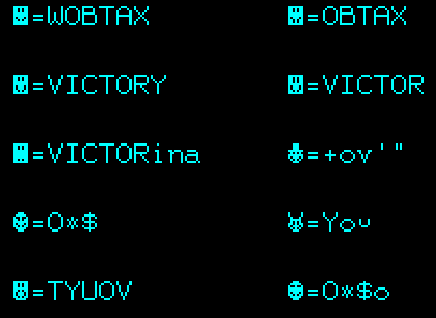
Introducing a PLATO character overwriting emulator
I recently had a GREAT idea to overlap pixel art letters to form artwork… then discovered it had been done in the 1970s by PLATO system users. Well, fine, I’ll build a basic emulator instead!
Emulator
Available at plato.jakelee.co.uk, the core concept is you type letters, and they get overlapped. For example o and l would draw a circle with a vertical line through it, and so on. Sounds simple, but it’s surprising how complex the images can get!
My emulator uses the original PLATO font “PlatoAscii.ttf”, available from the PLATO preservation group cyber1. Whilst I did install their full “Pterm” emulator and connect to their mainframe, it’s a little unintuitive for beginners!
Examples
Experimenting is most of the fun, but here’s a few examples courtesy of “Plato People” in 2002:
Features
The emulator is very basic, and only supports full size characters (e.g. not superscript or subscript) included in the font file. This means some PLATO-specific symbols such as arrows are not available yet.
Whilst a to-do list of features is available in the source code, possible future features include:
- Ability to link to a prefilled creation (e.g.
?q=WOBTAX). - Support every character the real PLATO system can display.
- Create a large library of example artwork.
- Support multiple characters in a row for more complex artwork.
- A way to view (3D?) how each character contributes to the final creation.
Technical details
The full source code is available in a GitHub repo.
The emulator is very simple, and not really an emulator! All it’s doing is layering each letter on top of each other, adding the ability to append / replace the text, and a bit of CSS styling on top. It’s hosted on GitHub Pages and runs entirely in the browser (obviously!).
Since my JavaScript and CSS are pretty rusty, GitHub Copilot did a lot of the heavy lifting, especially around clicking to add / edit text. Thanks GitHub!
Links
- To find out more about PLATO, and try the real thing, visit cyber1.org.
- For more example emoticons, there are short articles from 2002 and 2012.
